We all know how important audio is to all things digital. Podcasts appear everywhere—did I mention the MacDonald’s Podcast?
Now I have a chat with Jens Funder Berg, CEO of Visiolink, the Danish software supplier that specializes in e-papers, and he tells me that one of the latest things happening to e-papers is the addition of audio.
In fact, Visiolink now publishes a magazine that I recommend, Inspired by Visiolink, full of articles about e-papers and how media companies globally are experimenting with strategies that make those e-papers more viable and popular. In this issue you find real-life cases from the European media industry as told by media professionals, including Funke Mediengruppe, Jysk Fynske Medier and Bonnier Publications, among others.
Take a look at the magazine here:
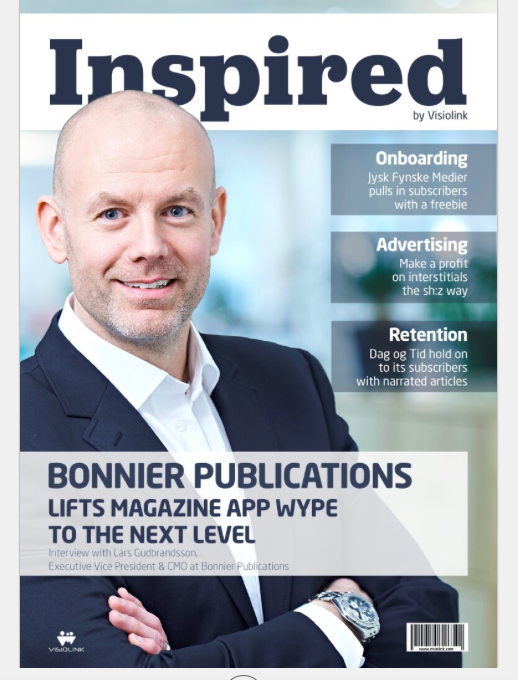
https://info.visiolink.com/download-inspired-by-visiolink
Data on e-papers
Take a look at this graphic which shows how relevant e-papers continue to be, and how most users consume them on tablets:
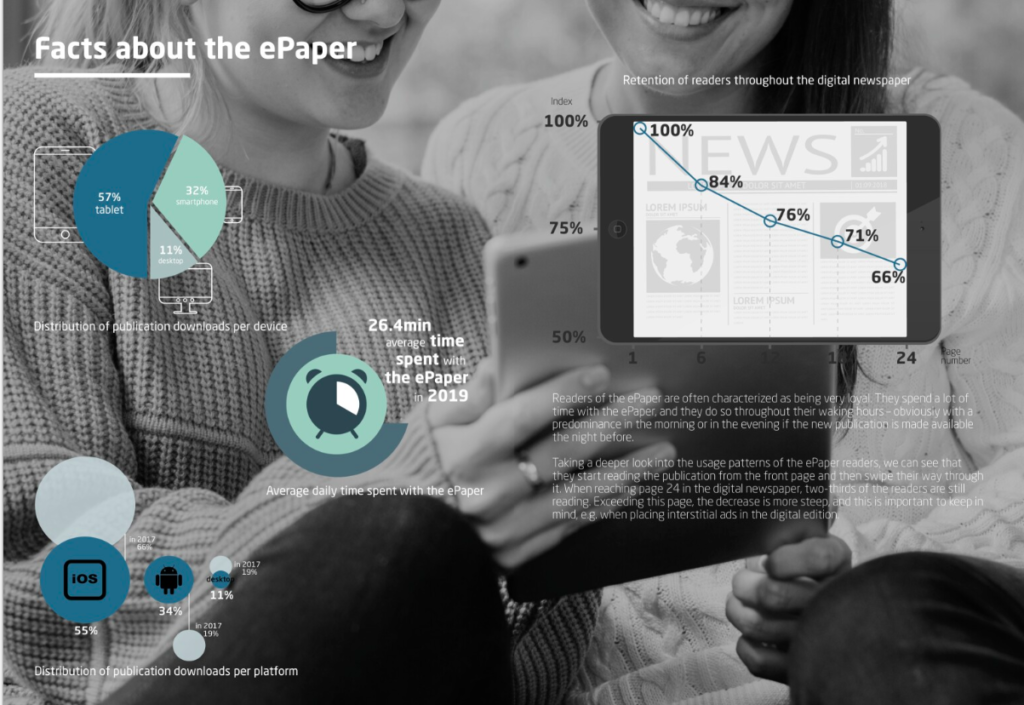
Background about the graphics:
The pie chart shows the distribution per device used for reading the e-paper. It’s calculated by looking at which type of device was used for downloading the publications over a given period of time.
Result in 2018: tablet – 59 % , smartphone – 30 % , desktop – 11 %.
Time spent: “Visiolink solutions come with a tracking setup that makes use of coordinates and timers to provide an accurate image of how long each of the publication’s articles are being read. But for this graph, we’ve been looking at how much time the readers spent on a daily basis by taking the accumulated number for time spent divided by number of issues in the given period of time and the amount of readers.
Result in 2018: 26.5 minutes.”
Distribution per platform: Same approach as in the 1st graph.
Result in 2018: iOS – 57 % , Android – 31 % , desktop – 12 %.
Here is how Jens Funder Berg, CEO, summarizes the findings:
“Throughout the last couple of years, we’ve seen a tendency that the e-paper users are spending a significant amount of time reading the e-paper, and they increasingly tend to do so on smartphones.
In terms of time spent, it’s reassuring to see that people indeed still value quality journalism. Combined with the media houses’ ability to enrich the digital newspaper, for instance with interactive crossword puzzles and audio content, the e-papers are a still more important loyalty driver.
Many of our clients have started making their own podcast series, and they also offer narrated articles which is not only a convenient way of consuming the content, e.g. when driving or doing household chores. It’s also something that has proven to affect the readers’ engagement time in a positive way. Consequently, making the readers more loyal to the media brand.”
Time spent is significant
My own takeaway from the data: Notice that, according to this chart, 26,4 minutes is the average time readers spend with an e-paper. This is significant for 2019, since early studies of time spent on printed newspapers (such as our Poynter Institute Eye Studies of the 1980s) showed an average time of about 32 minutes spent on a 4-section newspaper. That was then, and now attention spans are shorter, so I think it is a rather encouraging fact to read that so much time is spent with the content of an e-paper. I am sure advertisers in those products are happy to find out about this too.
More on the Poynter Eye Track Research:
https://www.facebook.com/PoynterEyeTrack
https://www.poynter.org/tag/eyetrack/
Case studies
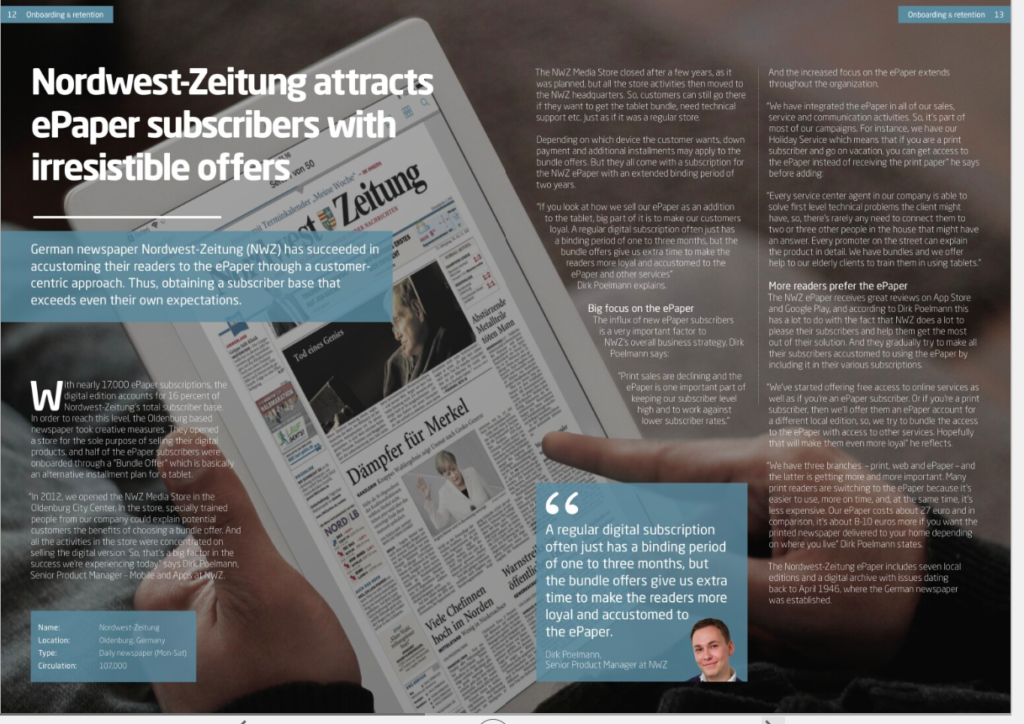
Audio and e-papers: what’s new?
Podcasts are very popular among the younger segment. As an example, Financial Times reports that 60 % of their listeners are between the age 22 and 37 (Source). And this is yet another factor why media houses make efforts for incorporating audio in the content mix.
Earlier this year, Norwegian newspaper DAG OG TID launched an audio initiative, which they opened up about on the Visiolink blog. (https://blog.visiolink.com/dag-og-tid-audio)
“The initial idea originated from the churn perspective, but obviously we also think about the younger segments who listen to podcasts and narrated news as being an interesting target group in this case. We’ve done quite a lot of research before starting this project, and audio content is something that many people are familiar with and interested in. Especially younger people,” Gregor Falkner, Marketing Manager at DAG OG TID.
Mario’s speaking engagements
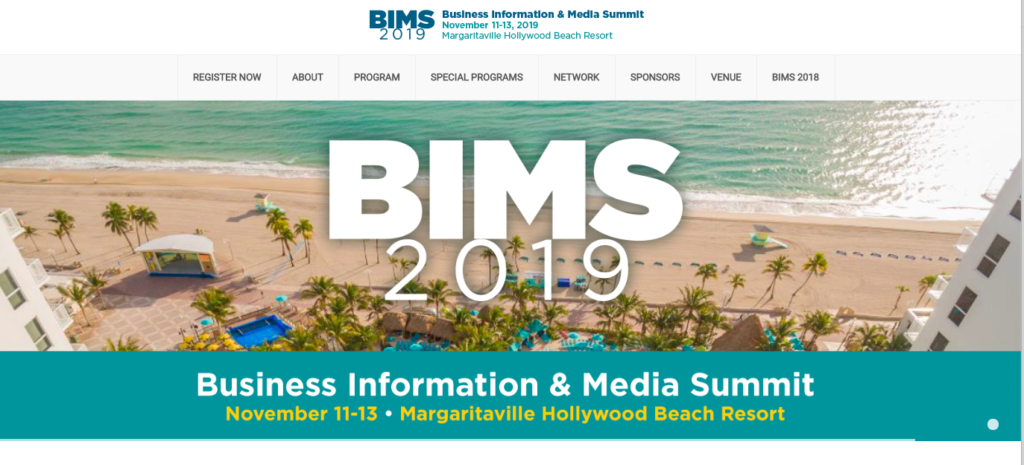
Keynote presentation: Business Information & Media Summit (BIMS).
Order print edition of The Story from Amazon
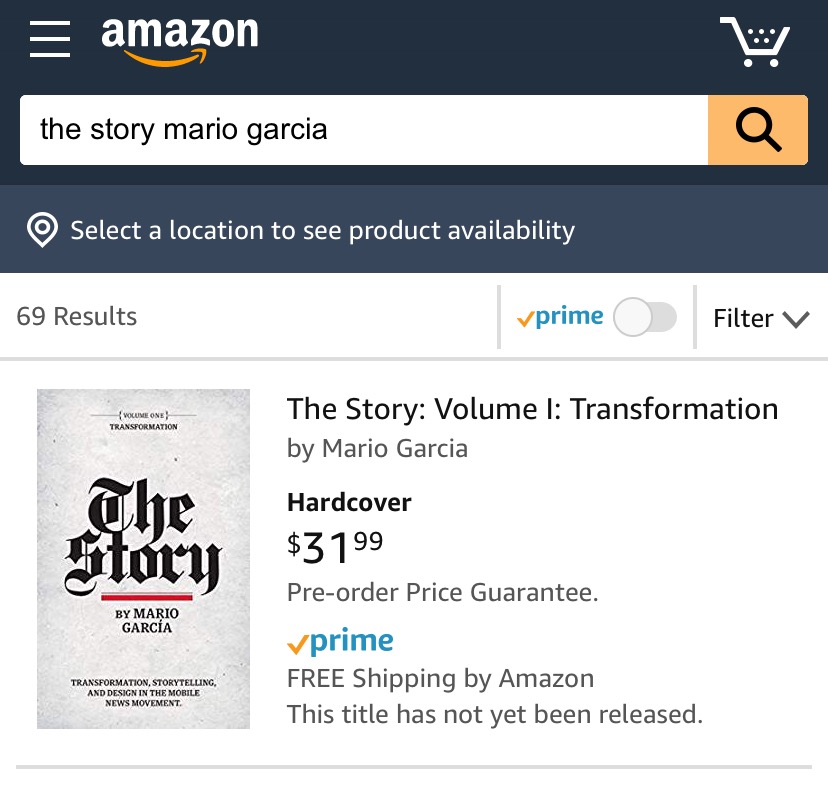
You can order the print edition of my new mobile storytelling book, The Story, from Amazon already here:
Pre-order The Story
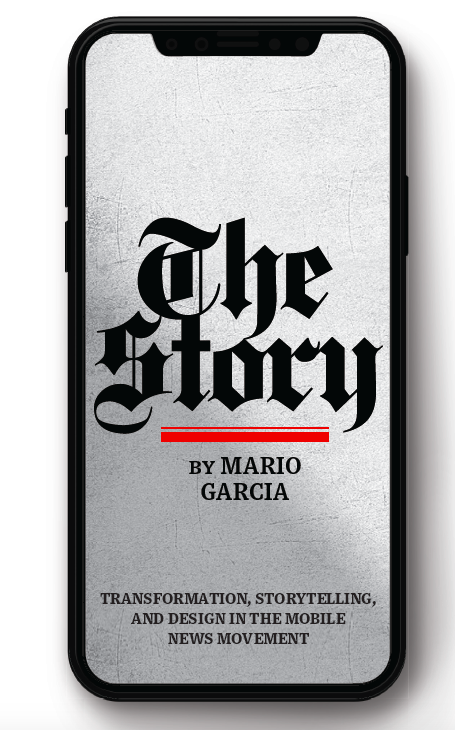
The newspaper remains the most powerful source of storytelling on the planet. But technology threatens its very existence. To survive, the Editor must transform, adapt, and manage the newsroom in a new way. Find out how, pre-orderThe Story by Mario Garcia, chief strategist for the redesign of over 700 newspapers around the world.
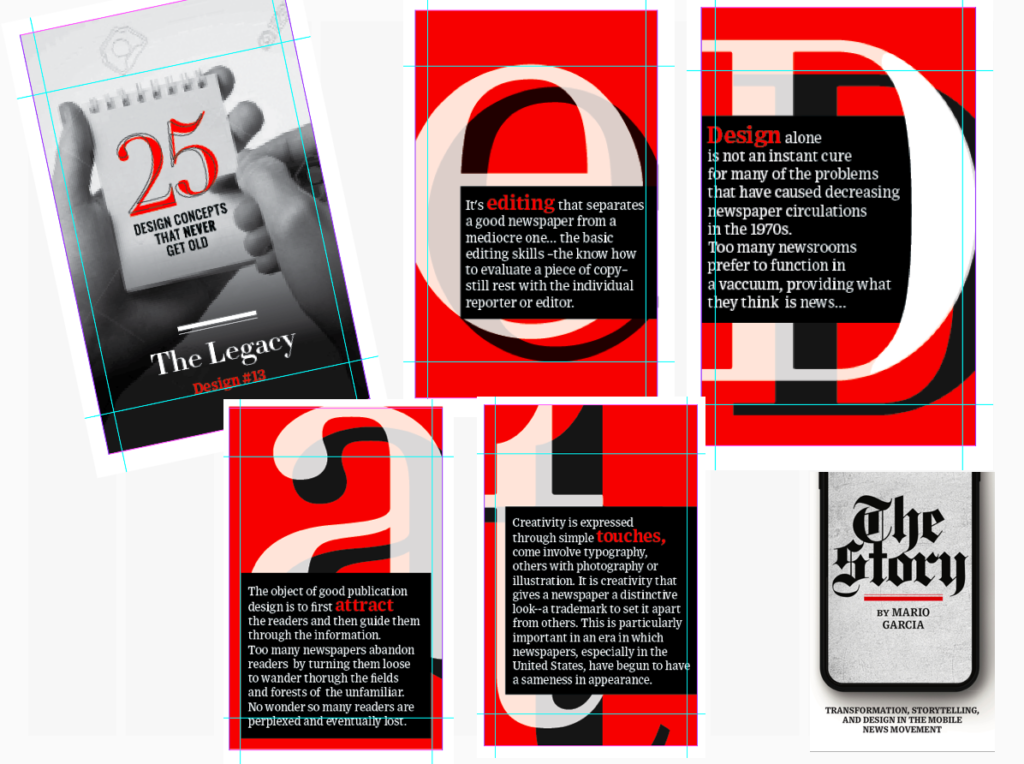
Order here:
https://thaneandprose.com/shop-the-bookstore?olsPage=products%2Fthe-story

The Story will also appear in print
I am happy to announce that we will, indeed, have a print edition of my mobile storytelling book, The Story. I thank you for expressing your interest to our publisher, Thane Boulton, of Thane & Prose. Now the print edition will be a reality, and you can already see the cover and back cover here:
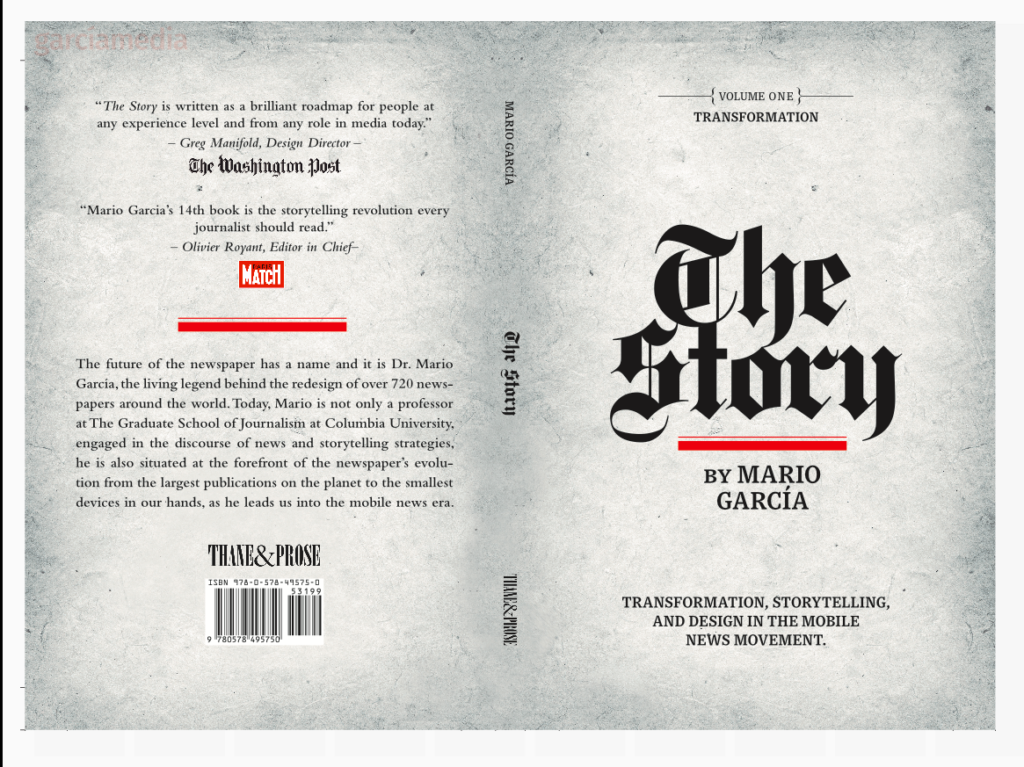
An interview of interest
http://www.itertranslations.com/blog/2019/3/11/fd60ybflpvlqrgrpdp5ida5rq0c3sp
The Inquirer is a brand that always resonates with me, as it was one of my projects in 1996, so I am aware of the traditions the Inquirer folks hold dear. After all, this is a newspaper that even Benjamin Franklin wrote for. I recall, as we were doing the redesign of The Inquirer, when Max King was editor in chief, how I was reminded, at every step of the process, about the newspaper’s history, the brand’s tradition and how to make sure that it was all preserved as we added more color and created a new set of story structures.
TheMarioBlog post # 3101